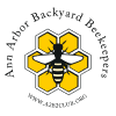|
Happy Spring Everyone! The Flow Hive Team isn't quite back in action yet, but I thought I'd give a quick update. As you can see, both hives survived the winter with flying colors and are now bringing in copious amounts of pollen. At a check about a week ago we took a quick peek at the bottom boards and fed the hives some winter patty and dry sugar bricks. A lot of what you can see on those bottom boards is sugar and debris, but if you look closely, we also spotted a small hive beetle carcass as well as a LOT of dead Varroa mites! One reason for the tons of dead mites could be that any mites surviving the winter in the hive all dive into the first few brood cells in the spring and then starve to death because there are too many mites for the larva inside the cell to support. Unfortunately, too many mites per cell also kills the first brood of the spring, but our strong hives should recover fine. We also hadn't cleaned the bottom boards all winter so these could be mites that died over the winter as well. In any case, I'm not worried and we won't be treating or testing the hives until probably mid-May. The first official Flow Hive Team check will be Saturday, April 15th at 11am in the A2B2 Teaching Apiary at the Campus Farm of Matthaei Botanical Gardens (next to the Project Grow Garden). At this first check we will be de-winterizing the hives: 1. Removing hive winter black roof felting wraps. 2. Removing mouse guards. 3. Taking off the quilt boxes. 4. Feeding bees 1:1 sugar syrup in top feeders. 5. Placing extra boxes with some drawn comb and some bare foundation to add more space and prevent swarming. Hope you can bee there! If you would like to join the A2B2 Flow Hive Team or would like to know more about the Flow Hive in general, please contact Jen Haeger at [email protected].
0 Comments
Right, back on track with a lovely sunny day on October 2nd! The mild, sunny weather was the good news. The bad news was the 5%+ mite infestation in both hives! (Around 5 mites/100 bees.) Fortunately, temps were still within range to use Formic Pro, so we treated both hives with 2 strips between deeps 2 & 3. Sadly, because we had to treat, we also had to take off the top feeders which were empty anyway. Why did we have to take off the feeders? According to research, simultaneous in- hive feeding of sugar syrup and formic acid treatment has caused high rates of bee mortality. Also, the label for Formic Pro says not to feed while treating and the label is the law! We also placed mouse guards on the hives as the weather is turning chilly and mice love the coziness of a hive in the winter. Additionally, we placed ridged foam insulation boards that are black on top over the outer covers for added insulation and to create an awning that protects the hives from rain and snow. The final team check for the season will be held on Saturday, November 5th at 11am in the A2B2 Teaching Apiary at the Campus Farm of Matthaei Botanical Gardens (next to the Project Grow Garden)! We will be winterizing the hives: 1. Treating the hives with an Oxalic Acid dribble. 2. Wrapping the hives with black roofing felt. 3. Supplying the hives with dry sugar insurance. 4. Placing quilt boxes at the top of the hives. 5. Closing up the screened bottom boards. 6. Placing rigid foam insulation boards between the inner and outer covers. Hope you can bee there! P.S. We removed the Formic Pro strips 2 weeks after placing them in the hives (per the label) using wedges and wood spacers to avoid fully opening the hives and exposing the bee cluster to the wind and forty-degree temperatures. If you would like to join the A2B2 Flow Hive Team or would like to know more about the Flow Hive in general, please contact Jen Haeger at [email protected]. Unfortunately, we were rained out at the last check, but did fill up the top feeders. The next check will be Sunday, October 2nd, 2022 at 11:00am in the A2B2 Teaching Apiary at the Campus Farm of Matthaei Botanical Gardens (next to the Project Grow Garden). Hope you can bee there! I'm happy to report that despite the new, two-gallon, top feeders being full about 3 days after we put them on, today they were empty and all that syrup has been converted to wax on the new foundation frames! Huzzah! Also, we performed alcohol washes on both hives and found a <1% infestation of Varroa on both mite checks (reported proudly to the BIP Mite-A-Thon). We also were lucky enough to spot both queens (easier now that they're both marked). We did see one small hive beetle (which Clay squished), but most hives have a few running around and they aren't typically a problem in strong hives. We filled the feeders back up and are now in great shape for winter! Our next check will be: Saturday, September 24th, 2022 at ***11am*** in the A2B2 teaching apiary in the Campus Farms area of Matthaei Botanical Gardens. [PLEASE NOTE LATER START TIME!!!] Plan: 1. Checking top feeders to see if bees are taking syrup. 2. Check frames to make sure all drawn comb and filled with honey. 3. Mite test (alcohol wash) to make sure we have strong bees going into winter 4. If mite counts are above threshold, treat with FormicPro strips. If you would like to join the A2B2 Flow Hive Team or would like to know more about the Flow Hive in general, please contact Jen Haeger at [email protected]. At this Flow Hive Check, we wanted to check to see that the introduced queen of the split hive was laying well, find her and mark her with a yellow dot (for 2022), add a third deep box to the split, apply robbing screens to the entrances of both hives, and add 2-gallon top feeders of sugar syrup to get the bees to draw out wax on foundation frames in the hives. I'm glad to report success on all fronts except that we only applied one robbing screen to the original hive and left in the entrance reducer of the split hive. Everything is looking great as we fatten up the hives and prepare for winter. Our next check will be: Saturday, August 27th, 2022 at 10am in the A2B2 teaching apiary in the Campus Farms area of Matthaei Botanical Gardens. Plan: 1. Checking top feeders to see if bees are taking syrup. 2. Check frames to see if bees have been drawing out comb. 3. Mite test (alcohol wash) to make sure we have strong bees going into winter and report to the BIP August Mite-a-Thon! (https://beeinformed.org/2022/05/06/join-the-2022-mite-a-thon/) 4. If mite counts are above threshold, we will have to wait until the weather will be below 85 degrees Fahrenheit for 3 days (Wednesday) to treat with FormicPro strips. If you would like to join the A2B2 Flow Hive Team or would like to know more about the Flow Hive in general, please contact Jen Haeger at [email protected]. Just when I thought harvesting honey was a lot of work, try going through 4 deep boxes to find the queen on a blistering hot day only to have to go through 2 of the boxes twice! That's 48 frames we painstakingly examined before we found her majesty which is pretty funny since every other time we've been in this hive we've found her right away, even when we weren't looking for her! But, in the end, we did find and mark our old queen (white dot for 2021 enclosure) who is starting to slow down just a little in egg production. Whilst we were searching for the queen, we did a thorough inspection and assessment of each and every frame in the hive so we could most evenly divide resources between the old hive and the new hive (for a breakdown of what was on each frame, please scroll to the end of the post). Yes, we took our big, booming honey factory and split it into 2 hives to prepare for placing our new Flow Super on a second hive next year! One technique that we used to great effect was separating the 4 boxes while we did the inspection so that 3 of the boxes would sense the absence of the queen and those bees would be more willing to accept the new mated queen we snagged from the A2B2 Queen-rearing program. Thank you to Paul Mazur for bringing her to me! So, after we found and marked old "Flo" white, we took a sample of 10 larvae to send to MSU for a European Foulbrood surveillance study. Then we did a quick alcohol wash to see if our previous treatment with Formic Pro strips and our Integrated Pest Management drone board technique are keeping our mite levels down. We were happy to see only 1 mite/300 bees! So things are looking great on the Varroa front. Finally, we distributed the frames so that both hives had equal amounts of brood, pollen, honey, and drawn comb and made two hives, one with 3 boxes and the old queen, and one with 2 boxes and the new caged queen. We left her in a queen cage plugged with marshmallow, and were optimistic that she would be accepted because the bees that covered the cage were easily brushed off and were more happily interested in her than angrily trying to murder her through the cage. Two days later we checked the cage and found it empty and the bees acting content, so it looks like a successful introduction. Plan for Next Check: 1. Make sure new queen is laying well. 2. Mark new queen with yellow dot (2022). 3. Add a 3rd box to the new hive with 4 frames of new wax foundation and 4 frames of drawn comb from the old hive. 4. Feed both hives 1:1 sugar syrup to encourage them to draw out the foundation frames before winter. 5. Place robbing screens on box hives. The next Flow Hive check will be on Sunday, August 14th, 2022 at 10am at the A2B2 Teaching Apiary next to the Project Grow Garden in the Campus Farm area of Matthaei Botanical Gardens. Hope you can bee there! If you would like to join the A2B2 Flow Hive Team or would like to know more about the Flow Hive in general, please contact Jen Haeger at [email protected]. Frame Inventory:
Green Box = #1 - lots of back-filling of the brood chamber with honey 1. little pollen, mostly capped honey 2. honey, pollen 3. pollen, nectar, honey (moved to box 5 = wet box, deep white on bottom of old hive and replaced with wet honey frame from box 5) 4. same as 3 (moved to box 4 and replaced with wet frame from box 5) 5. same as 3 (moved to box 5 and replaced with frame of nectar where some of the frame still needs to be drawn out from box 4) 6. same as 3 7. same as 3, but slightly more capped honey 8. mostly capped honey Flow Hive Brood Box - Tan = #2 1. honey - 80% capped on one side & 20% capped on the other side 2. capped honey, nectar, pollen (moved to box 5) 3. capped brood, honey, pollen, eggs, open brood, drones present 4. eggs, drones, capped brood, open brood 5. capped & open brood, no eggs, pollen 6. eggs, open & capped brood 7. honey, pollen 8. capped honey - 100% White Box = #3 1. 100% capped honey 2. 100% capped honey one side, 70% on other side 3. bare foundation - starting to be drawn out with wax 4. same as 3 (moved to box 5 and replaced with wet frame from box 5) 5. capped brood 6. capped & open brood 7. black plastic foundation - starting to be drawn out with wax 8. 100% capped honey White Box = #4 1. nectar, drawing out plastic foundation (moved to box 5 and replaced with wet frame from box 5) 2. only partially drawn, some nectar - looks like bees ate off wax coating (moved to box 1 and replaced with pollen frame from box 1) 3. almost 100% capped brood, dark comb 4. drawn comb and nectar (moved to box 5 and replaced with pollen frame from box 1) 5. capped brood, but still some wax being drawn 6. nectar, drawing out wax (moved to position 7 and replaced position 6 with wet frame from box 5) 7. barely drawn out comb (moved to box 5?) 8. 100% capped honey White Box = #5 (box of extracted honey frames after all the swapping) 1. nectar 2. pollen 3. wet 4. bare foundation 5. wet 6. bare foundation 7. pollen 8. honey Current Hives: Original White Box = D1 1. nectar 2. pollen 3. wet 4. bare foundation 5. wet 6. bare foundation 7. pollen 8. honey Flow Hive Brood Box - Tan = D2 1. honey - 80% capped on one side & 20% capped on the other side 2. wet honey frame? 3. capped brood, honey, pollen, eggs, open brood, drones present 4. eggs, drones, capped brood, open brood 5. capped & open brood, no eggs, pollen 6. eggs, open & capped brood 7. honey, pollen 8. capped honey - 100% Green Box = D3 1. little pollen, mostly capped honey 2. honey, pollen 3. wet honey frame 4. wet honey frame 5. nectar where some of the frame still needs to be drawn out 6. pollen, nectar, honey 7. same as 6, but slightly more capped honey 8. mostly capped honey New - the new hive was put together while the mite check was going on, so may not be the correct box or frame order White Box = D1? 1. 100% capped honey 2. 100% capped honey one side, 70% on other side 3. bare foundation - starting to be drawn out with wax 4. wet honey frame 5. capped brood 6. capped & open brood 7. black plastic foundation - starting to be drawn out with wax 8. 100% capped honey White Box = D2? 1. wet honey frame 2. pollen 3. almost 100% capped brood, dark comb 4. pollen 5. capped brood, but still some wax being drawn 6. wet honey frame 7. barely drawn out comb? 8. 100% capped honey The weather on harvest day, July 23rd, started out cloudy and a little rainy, so first we did a mini-build and put together the new Flow Super as well as some new frames in preparation for splitting the hive. But, once things got going, all together we harvested 29lbs of honey from the Flow Super and 29lbs of honey from the deep box right below it! That's 58lbs of total honey from the Flow Hive this year! Way to go Flow Team!!! We also removed the drone board for Varroa IPM and removed the FormicPro strips we installed on July 2nd. Sadly we weren't able to complete the mite check to make sure our treatment worked, but plan on doing that next check. The good news is that the drone pupae cells had very few mites in them so I don't expect a high count of mites at the next check. Yay! Next check plans: 1. Find and mark old queen. 2. Mite check (alcohol wash). 3. MSU European Foulbrood surveillance sample. 4. Thoroughly inspect Flow Hive to assess resources. 5. Split hive into 2 hives. 6. Install new mated queen in queenless hive. If you would like to join the A2B2 Flow Hive Team or would like to know more about the Flow Hive in general, please contact Jen Haeger at [email protected]. Bad News: I would've liked this post to be talking about all the honey we harvested from the Flow Hive last weekend, but alas, unforeseen circumstances prevented the harvest, which has been rescheduled to Saturday, July 23rd. Good News: Although I couldn't bee there myself, Chris and Clay were able to run the hive check without me. They added a 4th deep box of drawn comb, and had to move the hive down onto cinder blocks because it was just too tall! :D It looks like it was a good thing that they needed to move the hive because there was some ant activity on the wooden stand under the back corner of the hive. They didn't spot the queen this time, but saw at least 8 frames of capped brood and plenty of open brood and eggs. Unfortunately, it was still too hot to treat for mites, so they added a drone board for mechanical trapping of Varroa. We will remove this on the 23rd. Clay is also going to add a FormicPro treatment hopefully tonight since the weather has cooled. Best News: The hive is still booming and the nectar in the Flow Super should be good and capped by the 23rd. Also, we plan on splitting the hive shortly after the harvest so that we can go into winter with 2 strong hives. This means possibly double the honey next year because were able to purchase another deeply discounted Flow Super from Flow Hive with our club credits! Remember, any member of A2B2 is eligible for a discount on certain Flow Hive products using a link in the members only section of this website, and when A2B2 club members purchase their Flow Hive using this link, A2B2 receives credits toward addition Flow Hive equipment. It is very exciting to be expanding the Flow Hive portion of the A2B2 teaching apiary, but we will need to assemble some equipment before we can make the split, so look for information on a Flow Team build day coming soon! Plan for Next check: 1. Harvest from the Flow Super! :) 2. Remove drone board for Varroa control. 3. Remove FormicPro strips. 4. Varroa mite check to determine if treatment successful. Our next check will be Saturday, July 23rd, 2022 at 10am at the A2B2 Teaching Apiary at the U of M Campus Farm at Matthaei Botanical Gardens. For new team members, the hives are located next to the Project Grow Garden. Thank you again to the Flow Hive team for making this year such a success! If you would like to join the A2B2 Flow Hive Team or would like to know more about the Flow Hive in general, please contact Jen Haeger at [email protected]. Hello again, from the Flow Hive Team! Yesterday's check was a rousing success, but we are still one check away from a honey harvest. We found the queen and tons of brood as well as tons of bees in all three of our deep brood chamber boxes. There were also lots of bees in the Flow Hive and they were well on their way to filling it with honey! There was also plenty of pollen for the bees to feed to all that brood and the brood were all plump, white, and floating in copious amounts of royal jelly. We decided against doing a mite check today due to the hot weather predicted over the next few days which would mean that we wouldn't be able to treat with FormicPro if the mite count was above threshold (3%). So, we're going to wait until the weather is more cooperative before our next mite check. One positive, though not at all scientific sign with regards to the mites, was that some drone comb at the bottoms of the frames got ripped open while we were inspecting and those larvae didn't have any mites on them. One task we did preform was a reverse of the bottom deep with the middle deep brood box and placing the queen in the bottom deep. There was more room for her to lay in the bottom deep, so we wanted to place that on top of her so she could find it more easily. The next Flow Hive Check will be a honey harvest on Saturday, July 2nd, 2022 at 10am in the A2B2 Teaching Apiary at Matthaei Botanical Gardens. Hope you can bee there! If you would like to join the A2B2 Flow Hive Team or would like to know more about the Flow Hive in general, please contact Jen Haeger at [email protected]. This check was all about increasing the size of the colony so that all of those bees can make us honey! What we first noticed however, was that the pretty, gabled Flow Hive outer cover had leaked and that there was pooled water on the inner cover. :( This seems to be a common issue with the Flow Hive outer covers and I no longer use the peaked covers for my personal Flow Hives. So we ended up replacing the outer cover with a more standard telescoping cover, but had to add a spacer because the telescoping covers will get caught on the knobs of the Flow Hive super. The other important task we accomplished was adding a third deep brood box filled with comb to the hive as it looked about ready to explode in population with many full frames of capped brood. Just for good measure, we found the queen and placed her in that new top box with 2 frames of brood so she could see all the space she now has to lay in. We also did a mite check using the alcohol wash method and found 2 mites/300 bees which is less than 1%, so no treatment was necessary at this time. Plan for the next check: 1. Check for eggs to make sure hive is still queenright. 2. Mite Check to keep an eye on mite levels so that they don't get out of hand. 3. Check the Flow Hive super to see if we are ready to harvest! The next Flow Hive Team check will be on Sunday, June 19th, 2022 at 10am in the A2B2 Teaching Apiary at Matthaei Botanical Gardens. Hope you can bee there! If you would like to join the A2B2 Flow Hive Team or would like to know more about the Flow Hive in general, please contact Jen Haeger at [email protected]. |
What is a Flow Hive?
A Flow Hive is a Langstroth-style hive system with plastic frames which allow honey to be harvested directly from the hive. www.honeyflow.com/pages/how-flow-works Archives
May 2024
Categories |

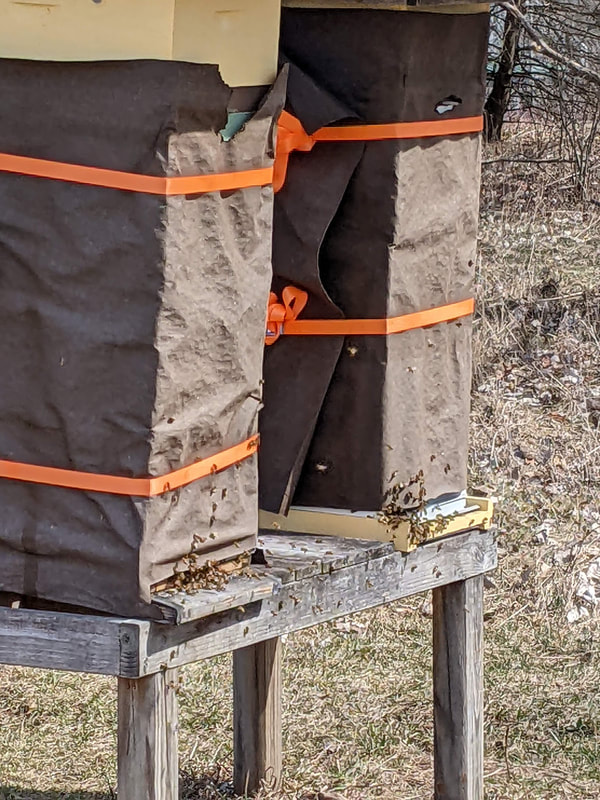
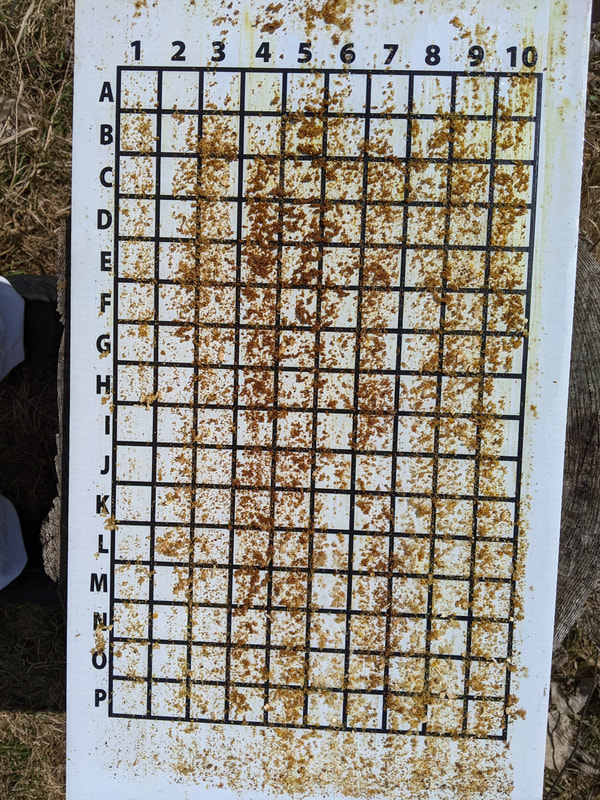
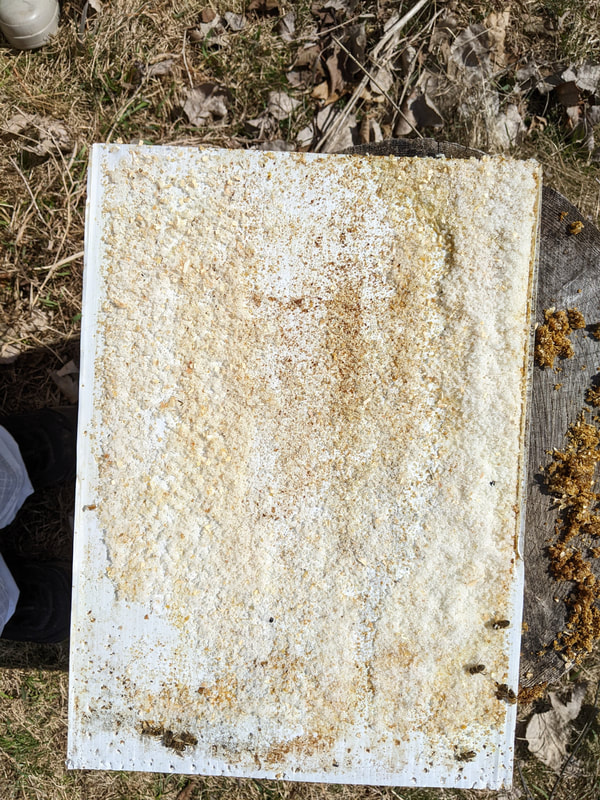
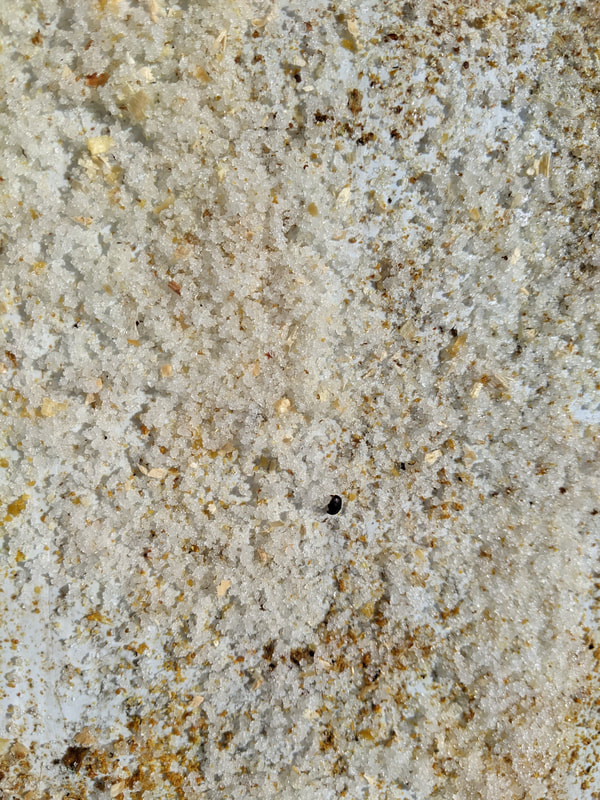
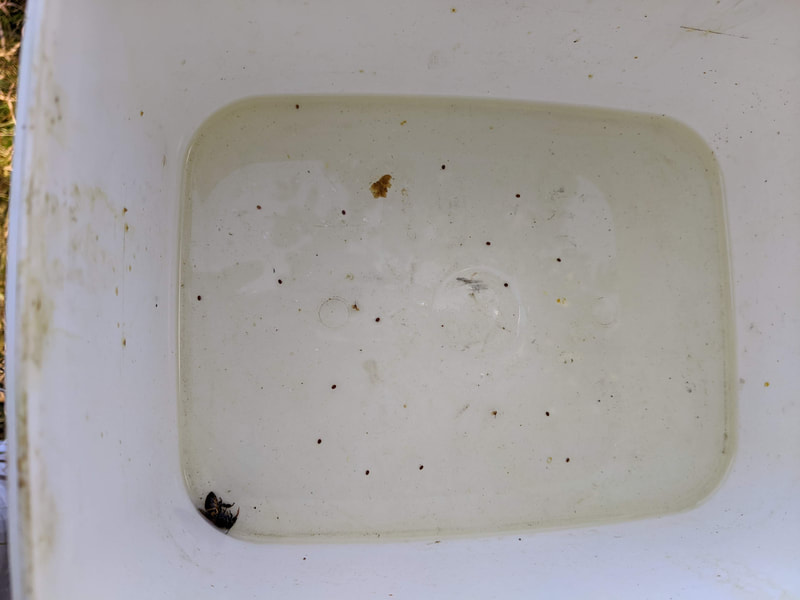
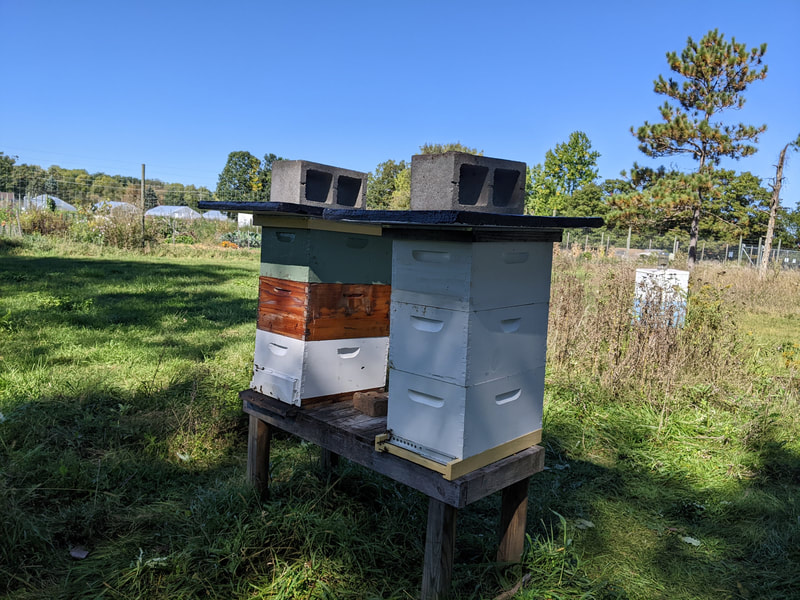
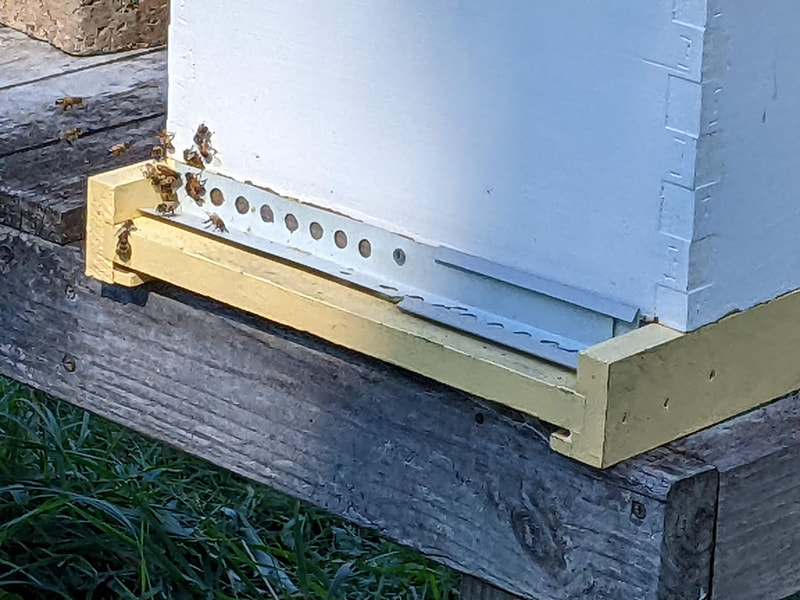
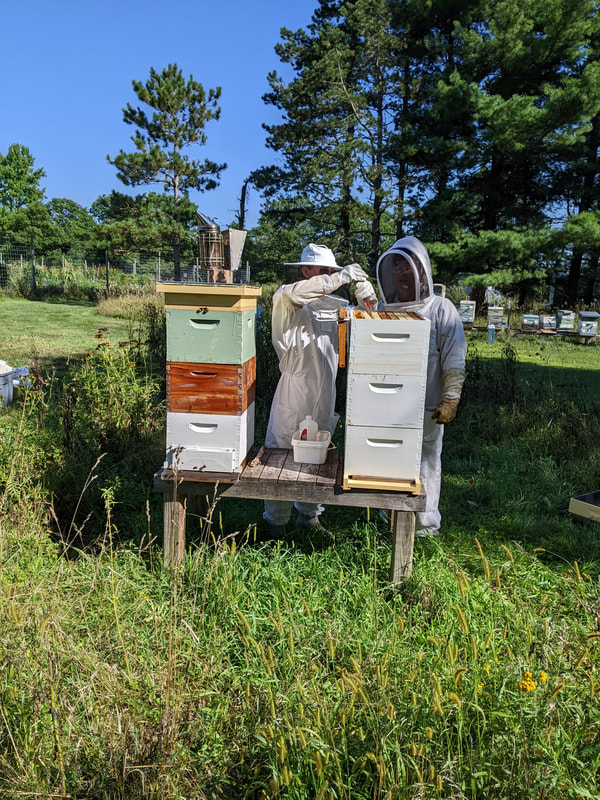
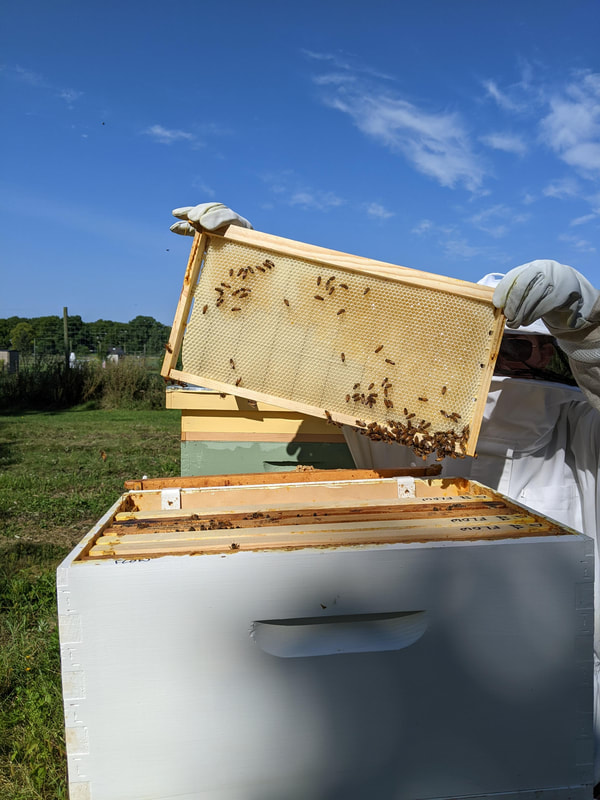
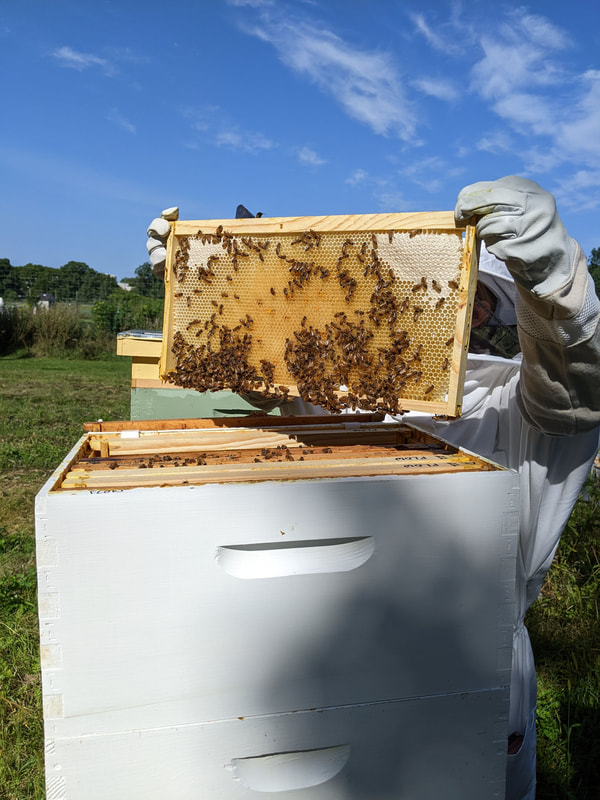
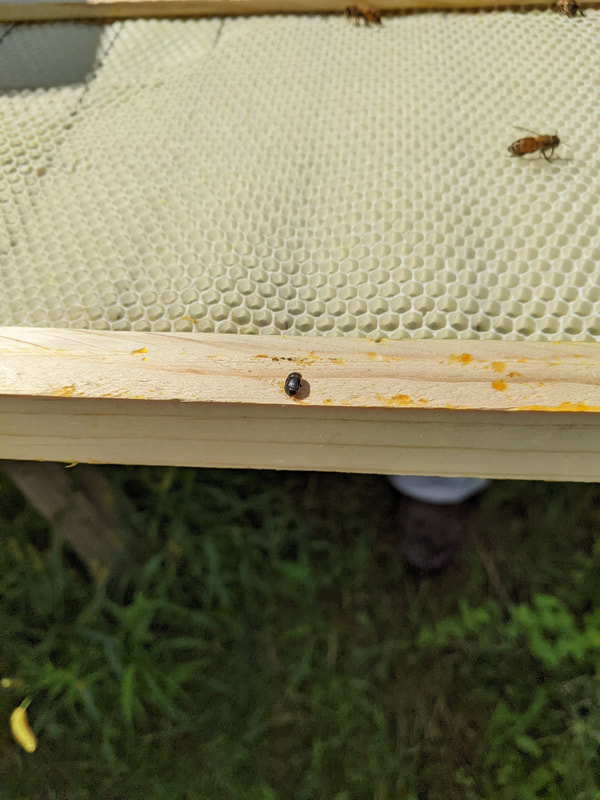
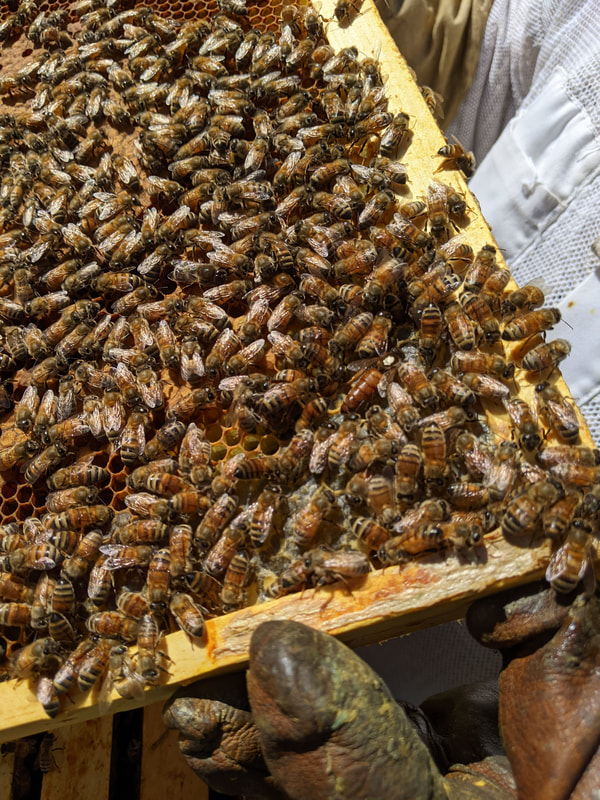
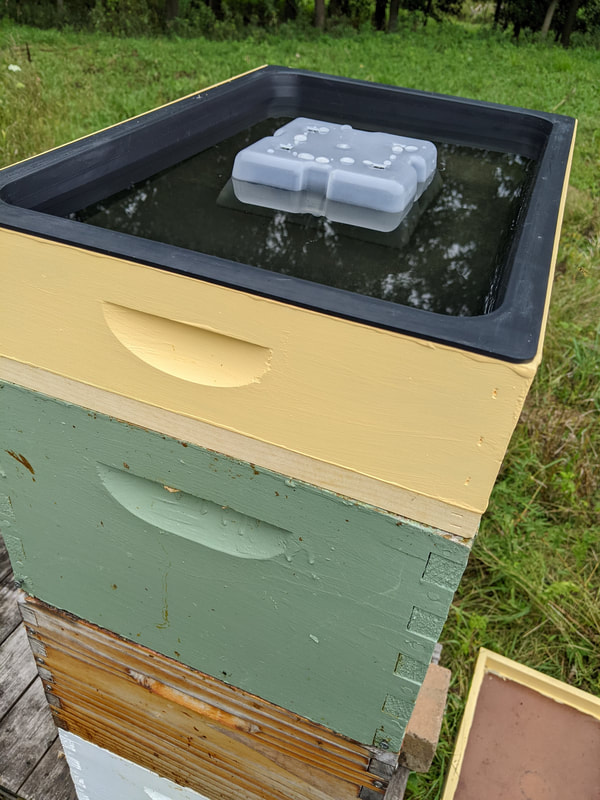
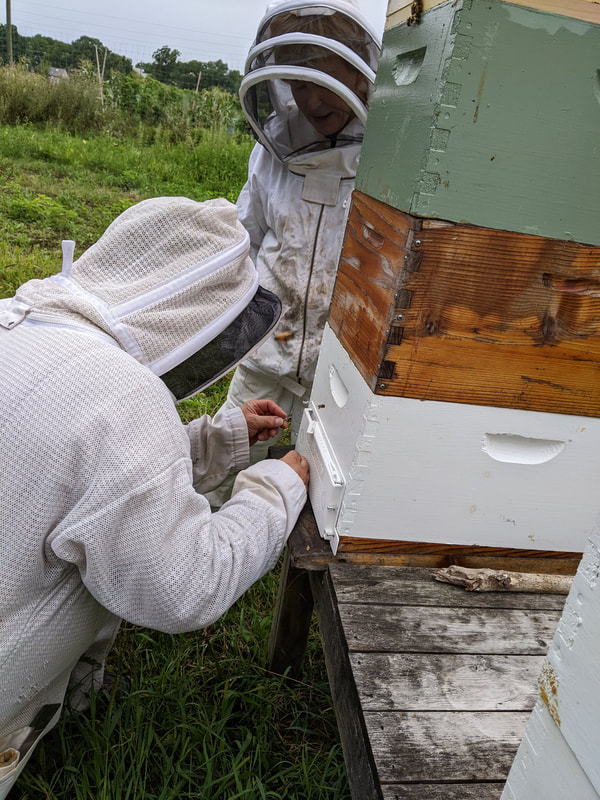
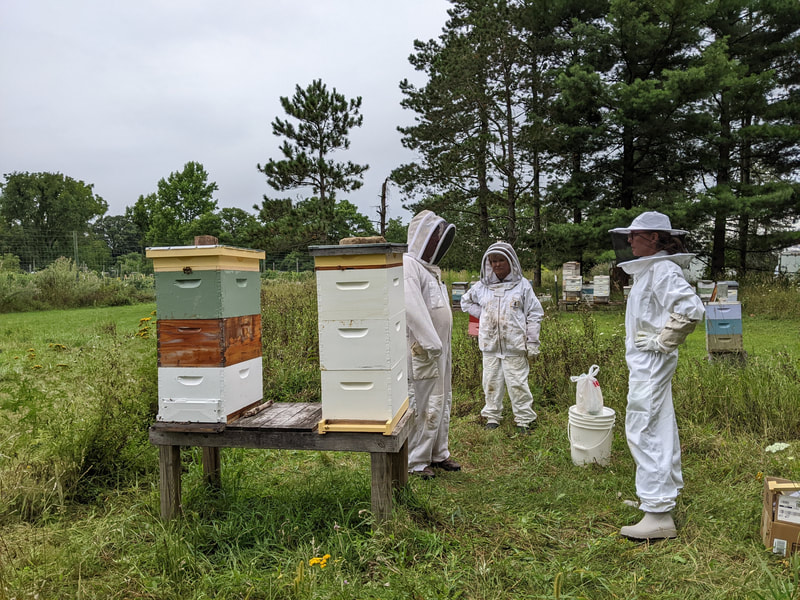
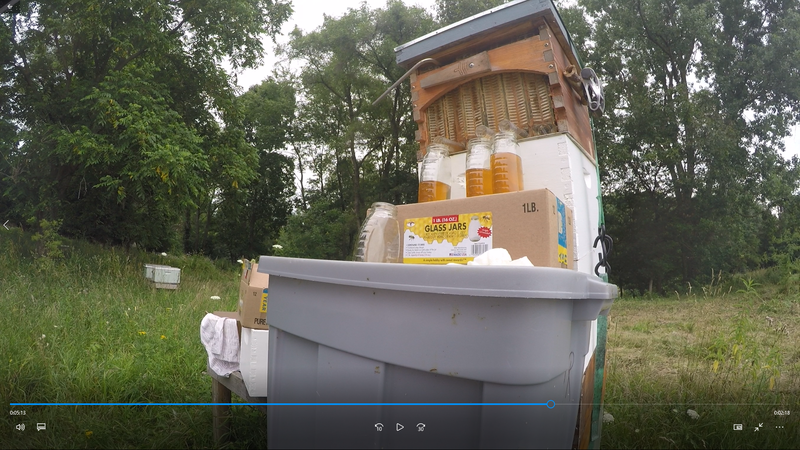
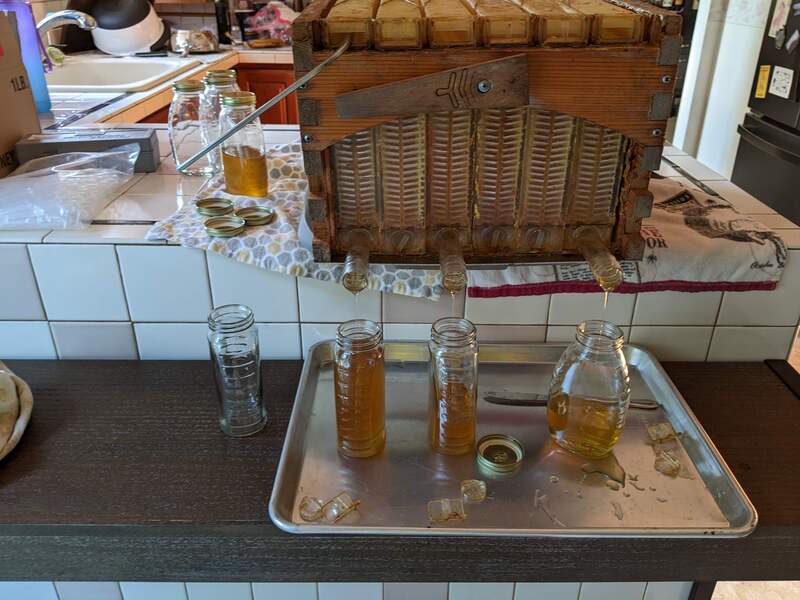
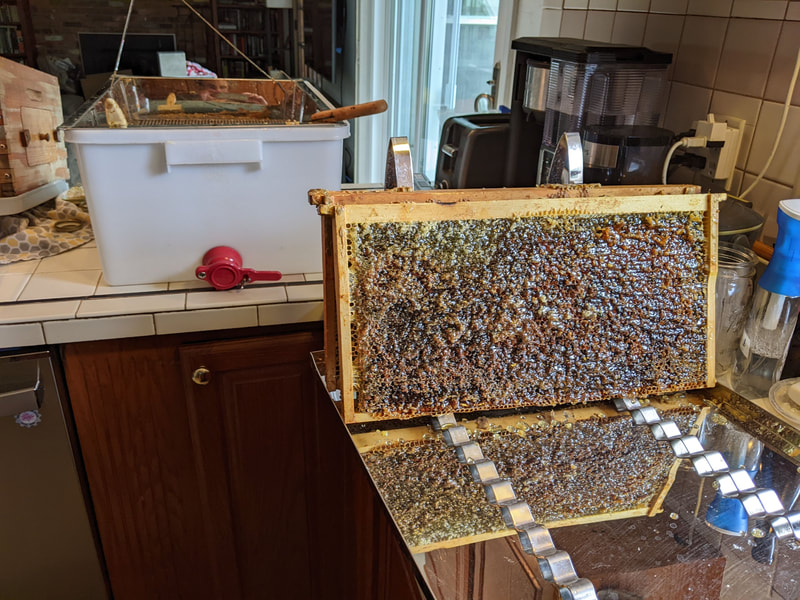
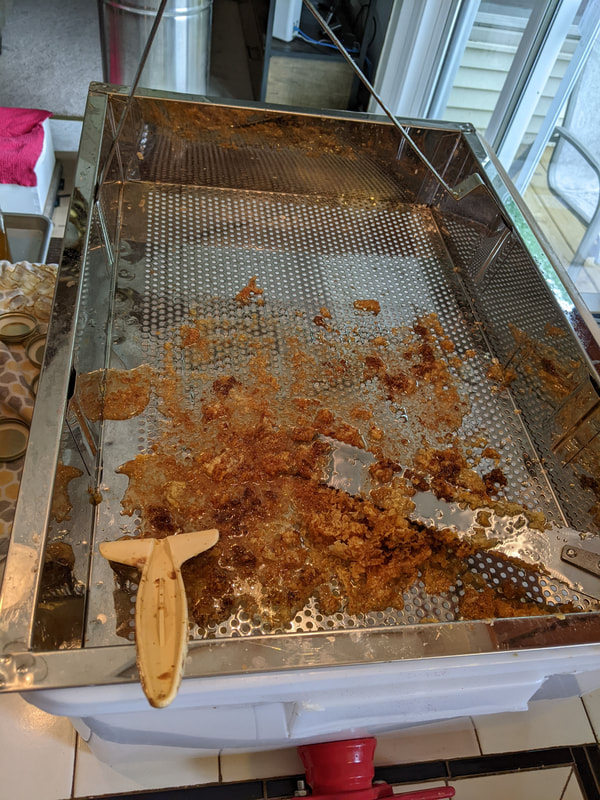
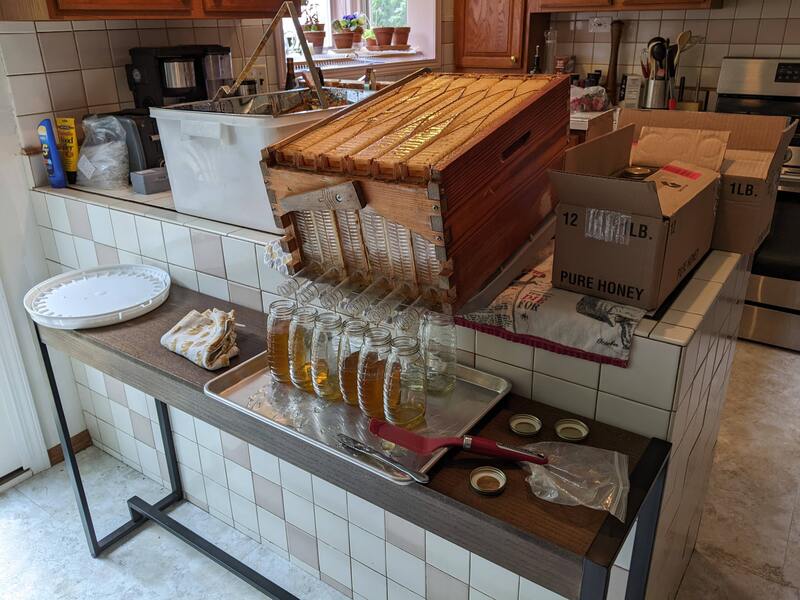
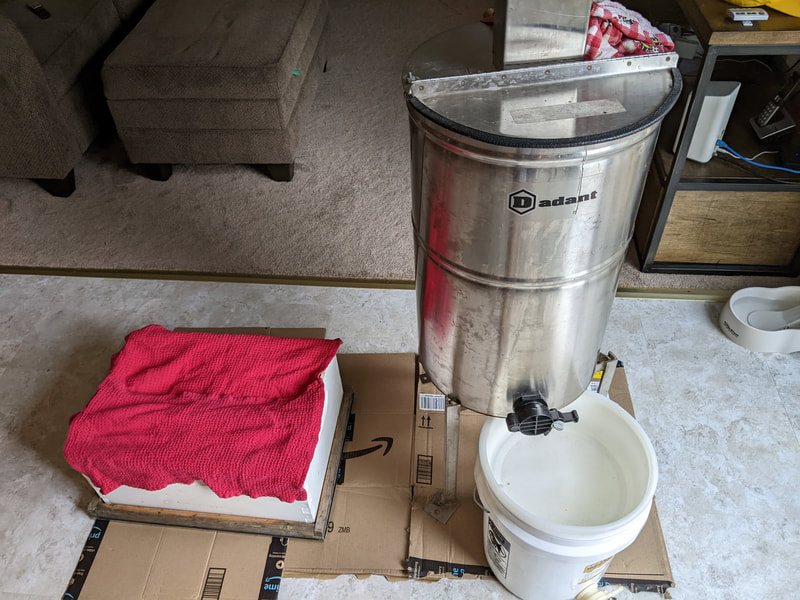
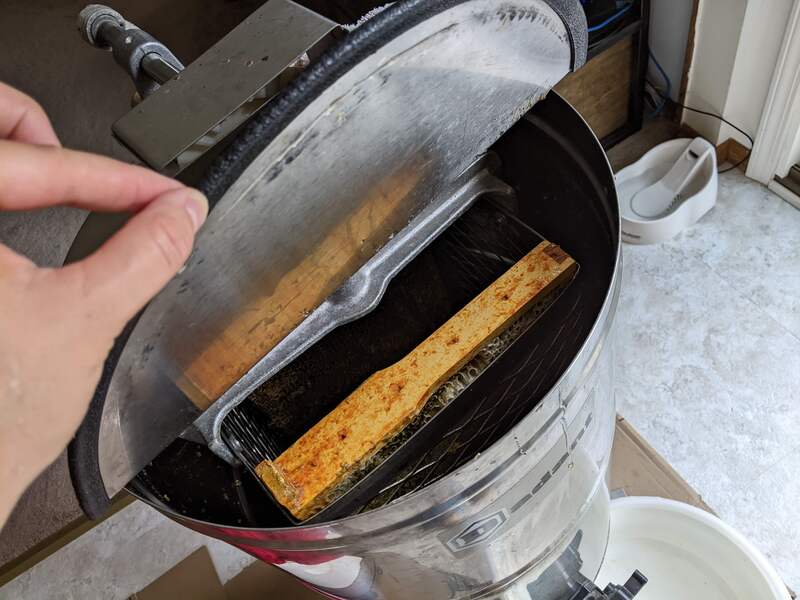
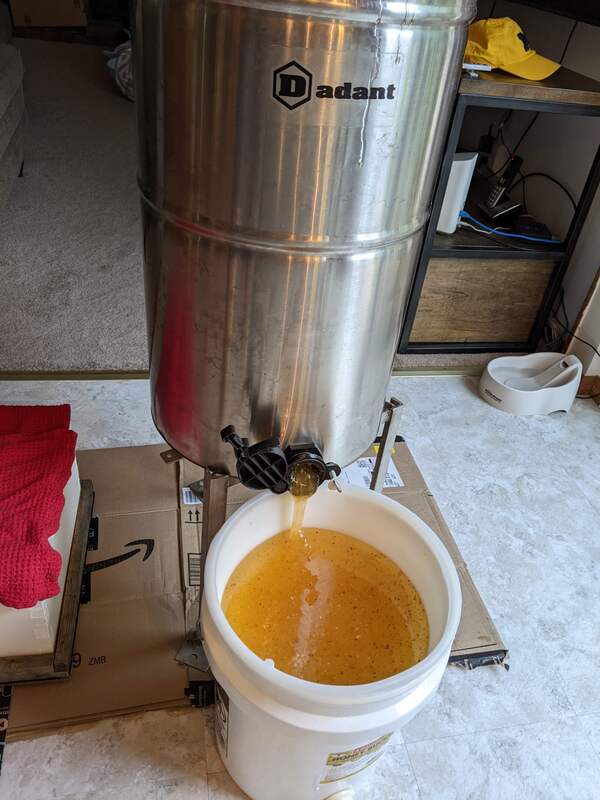
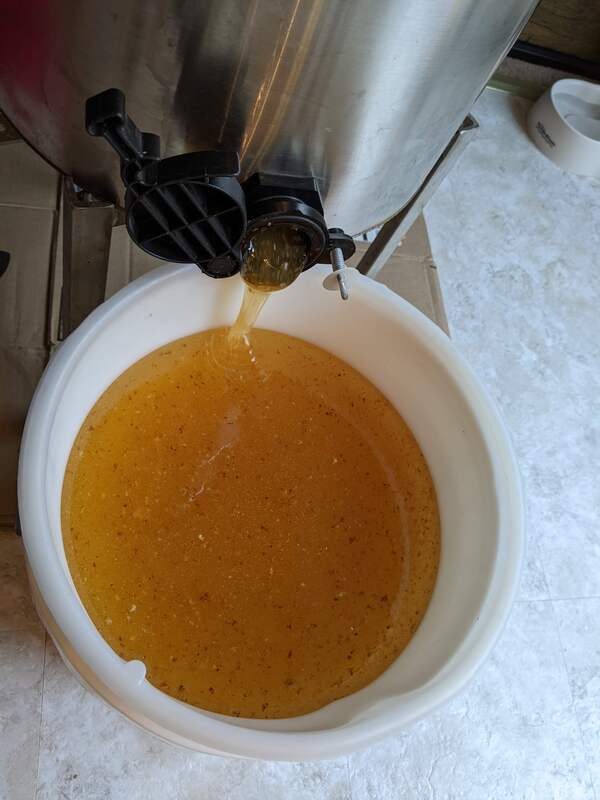
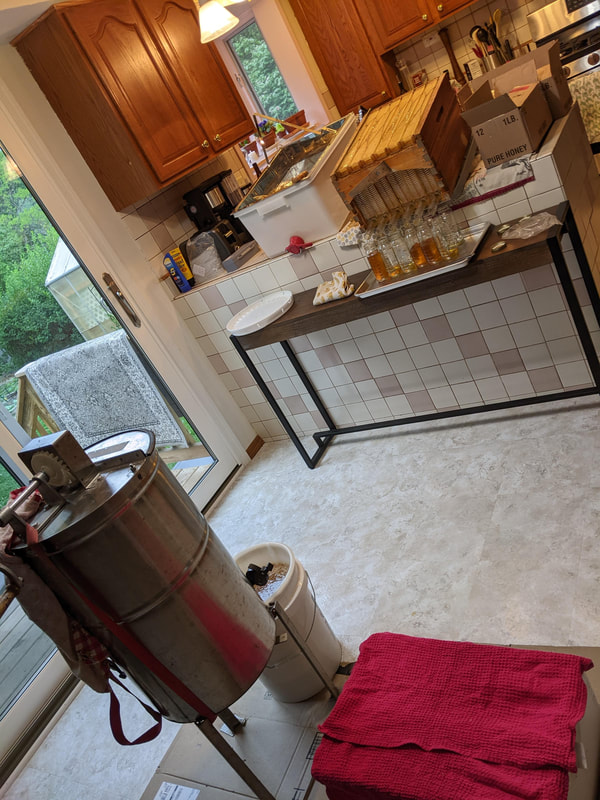
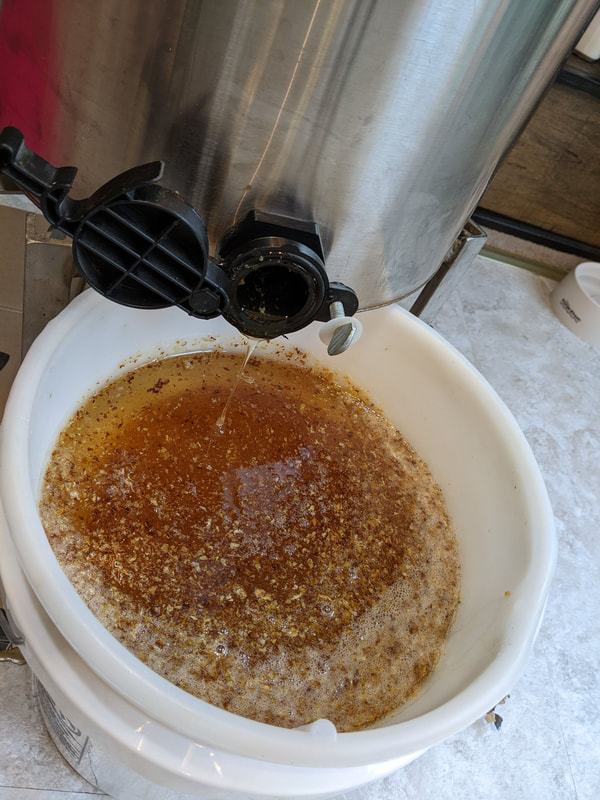
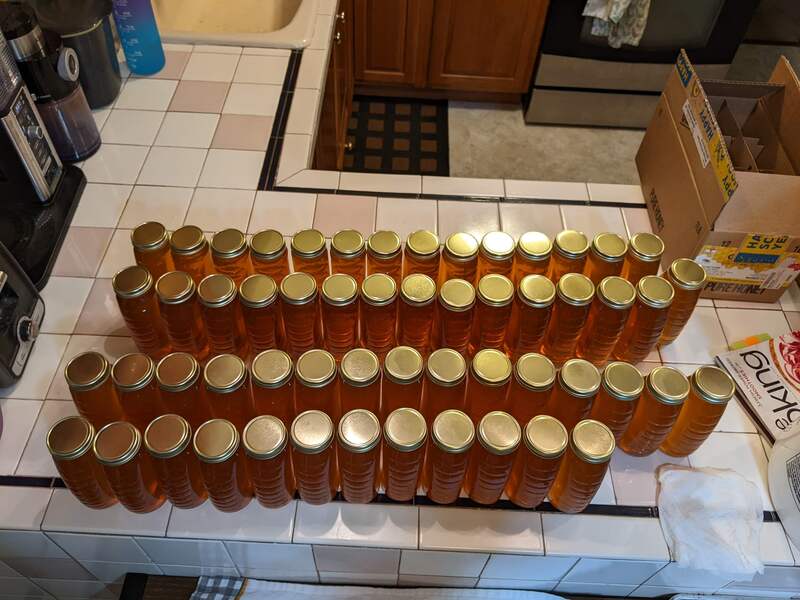
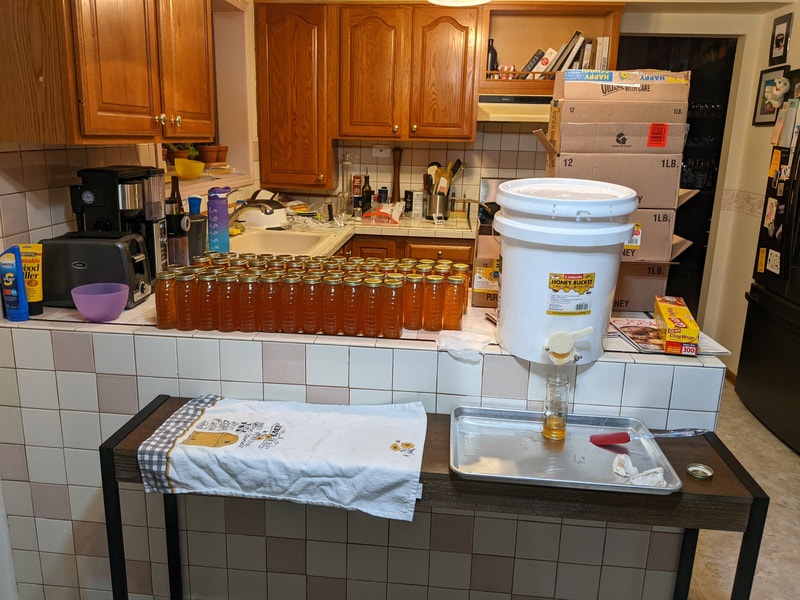
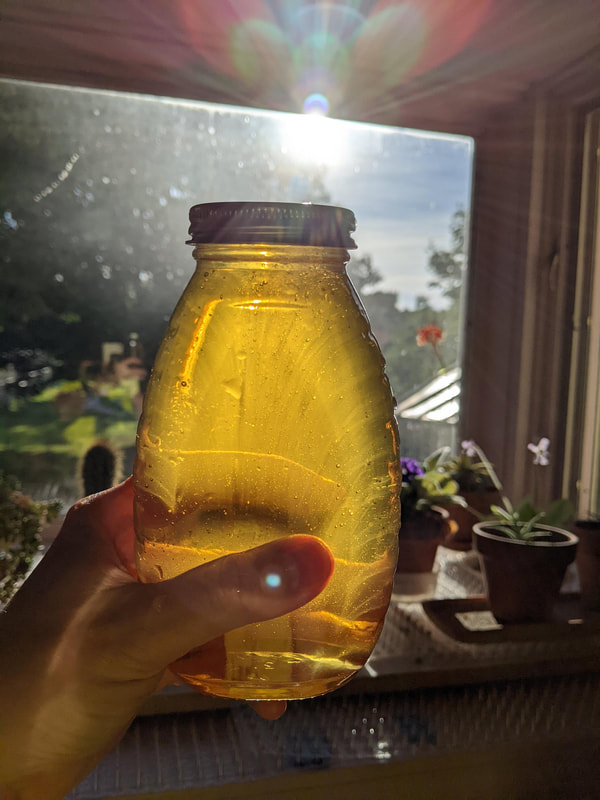
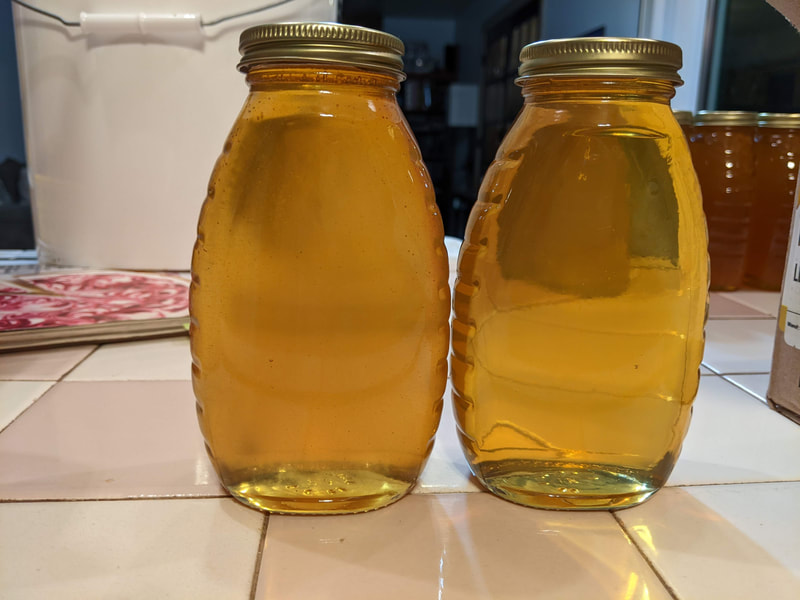
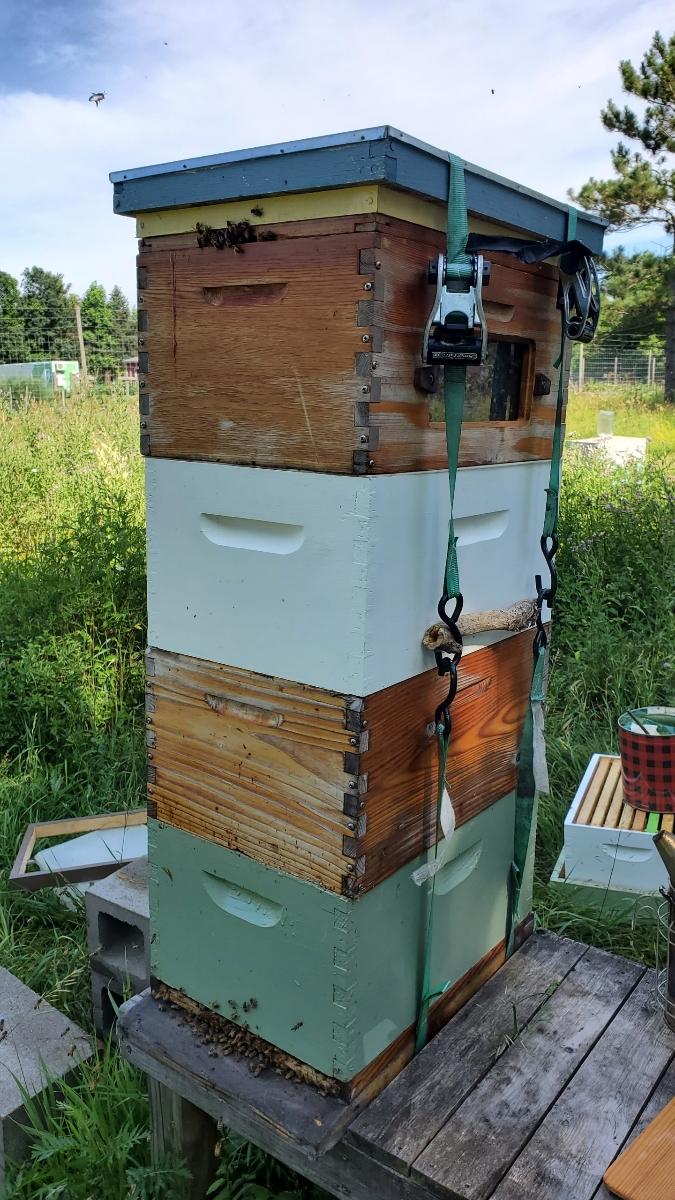
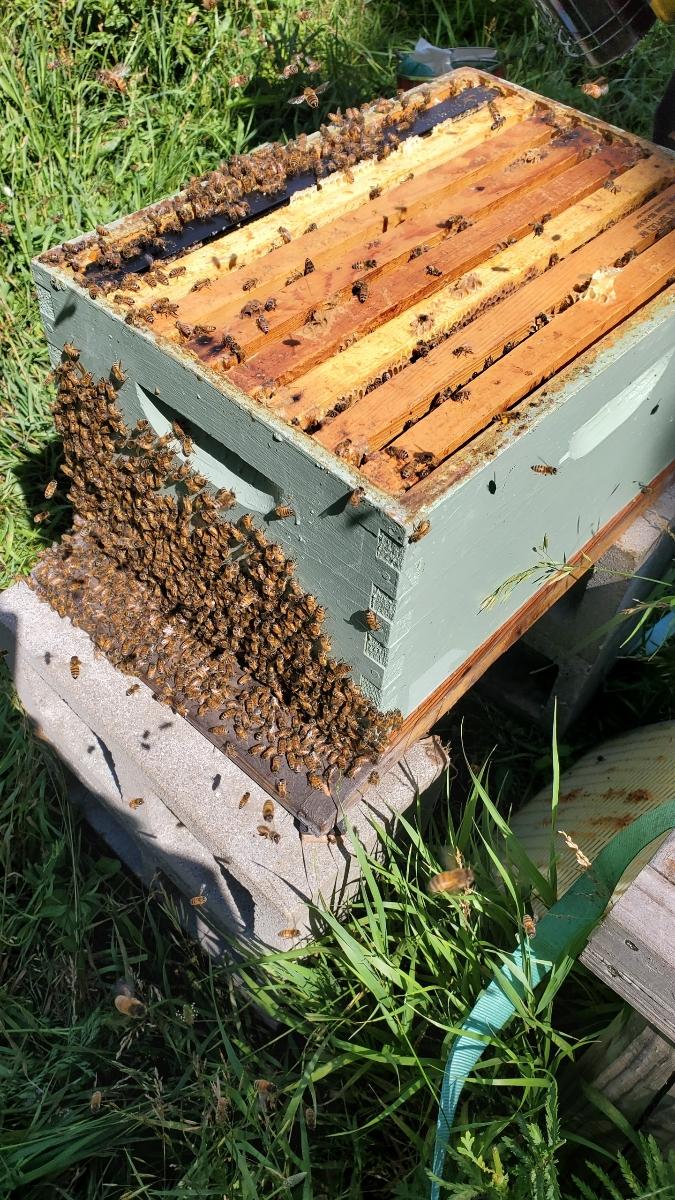
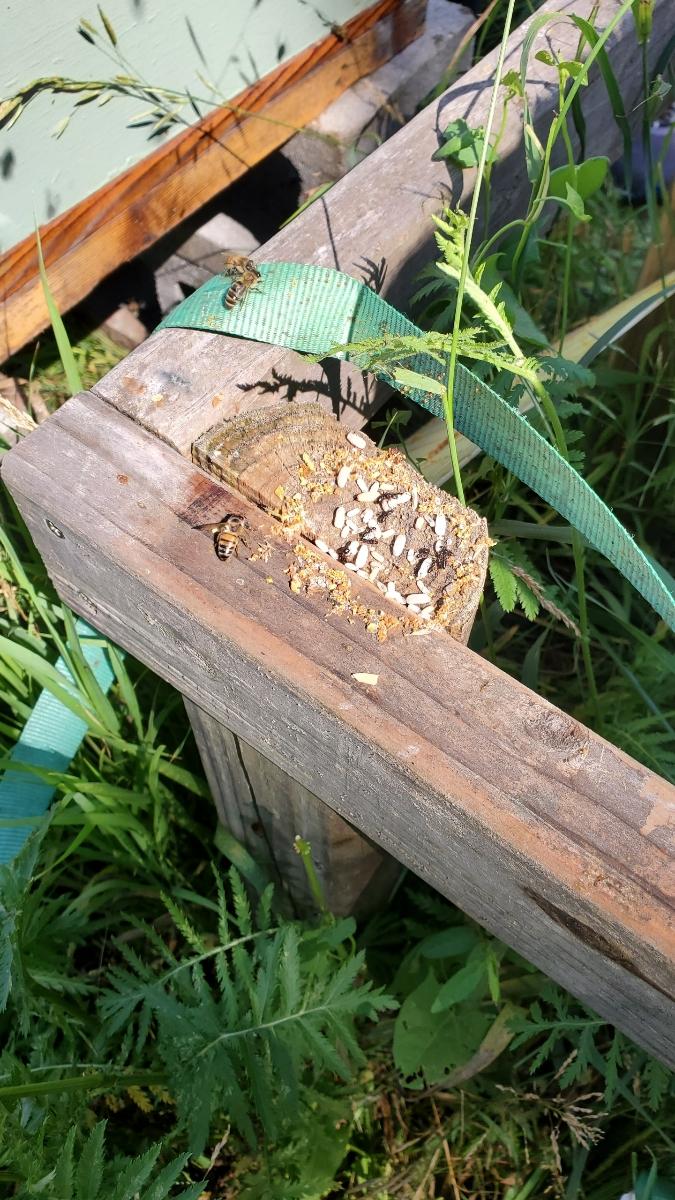
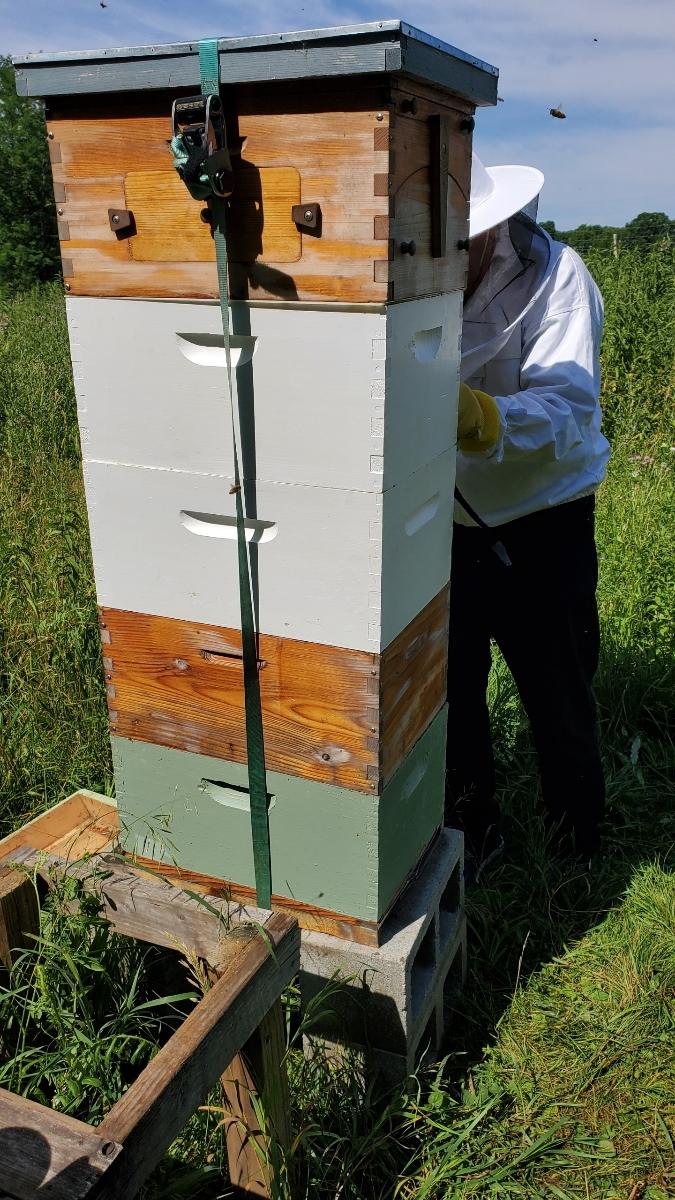
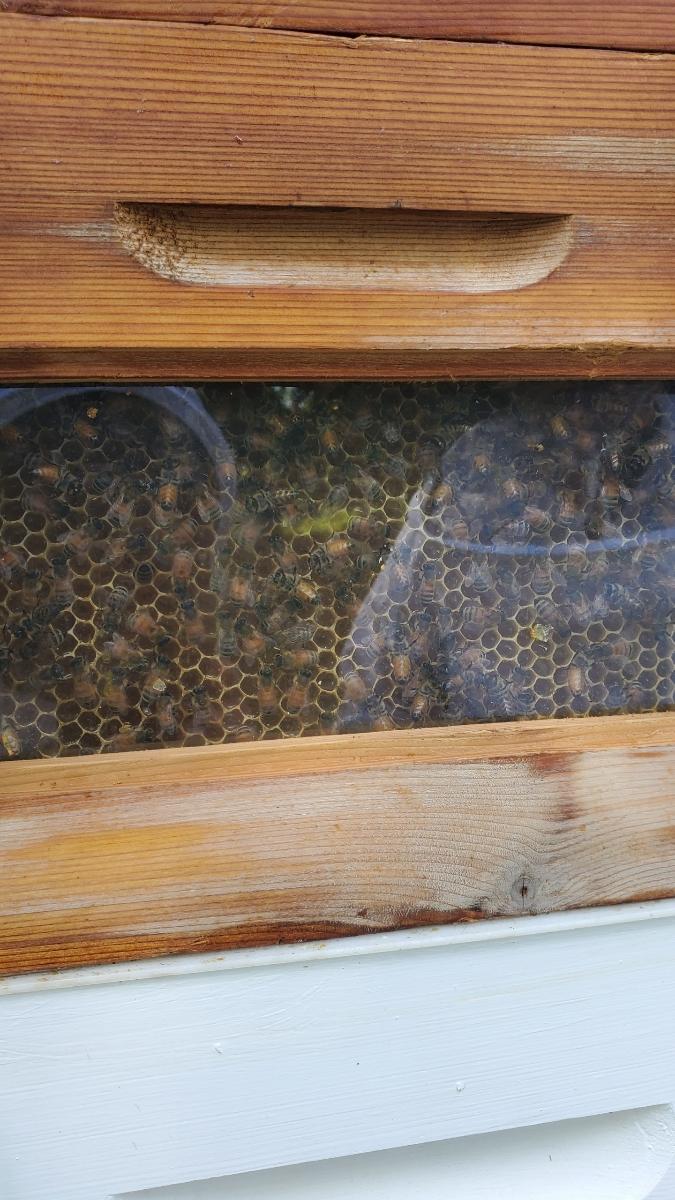
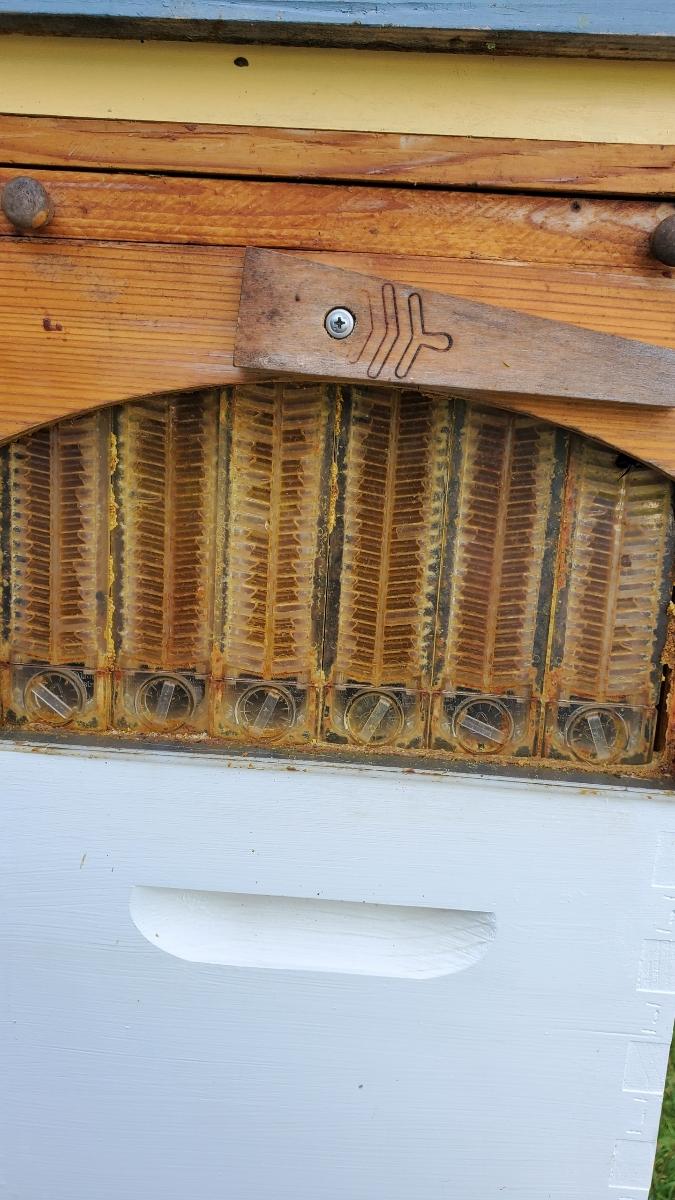
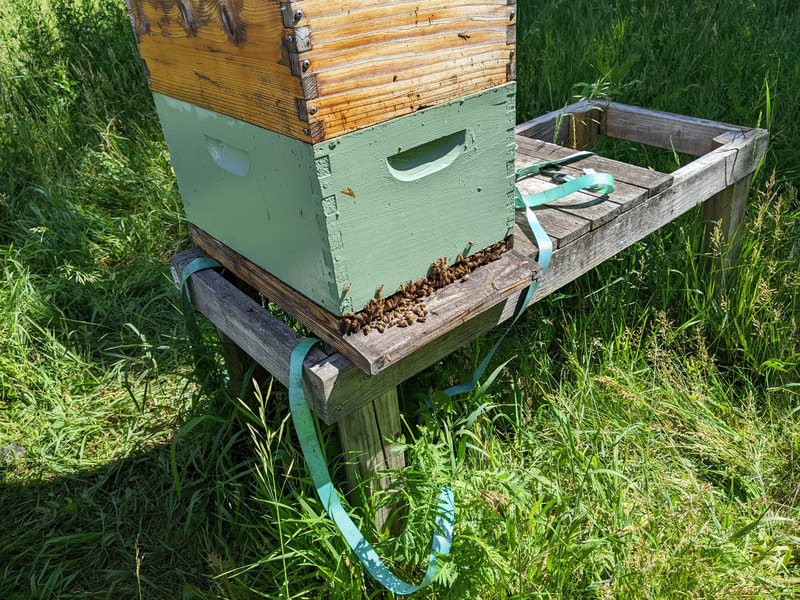
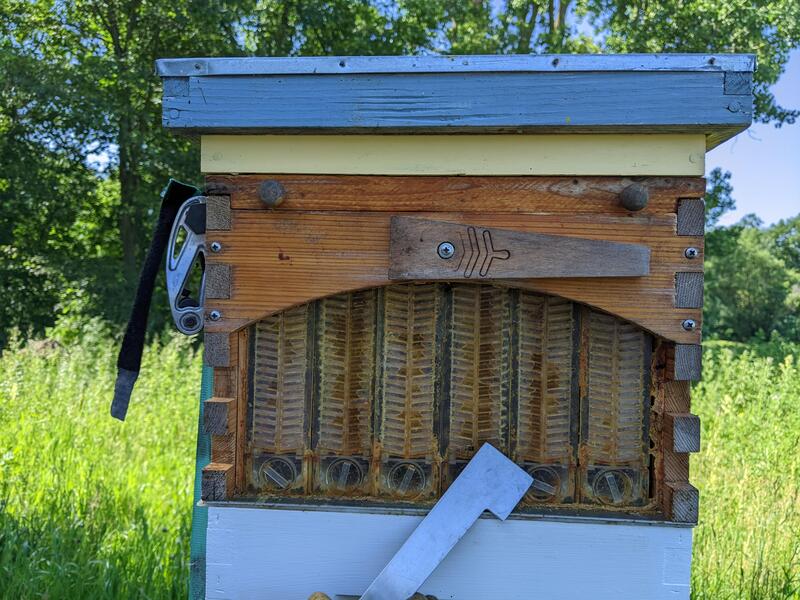

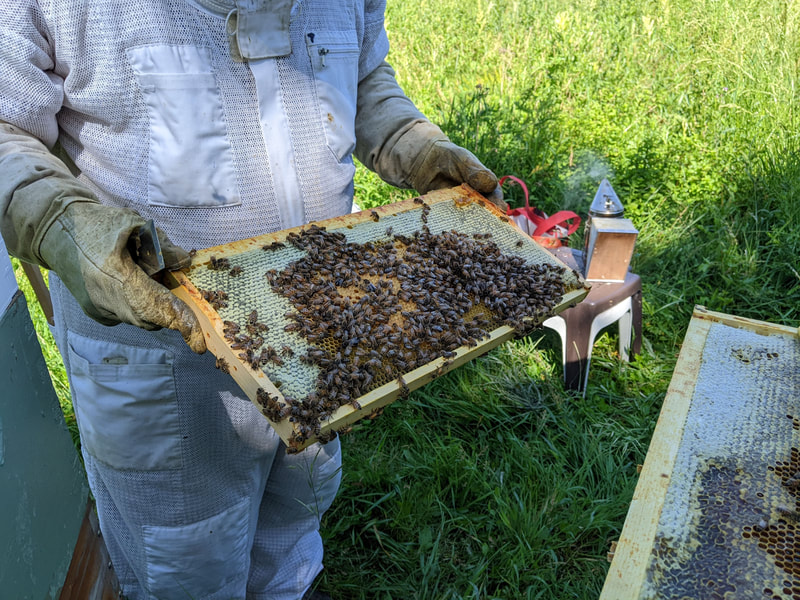
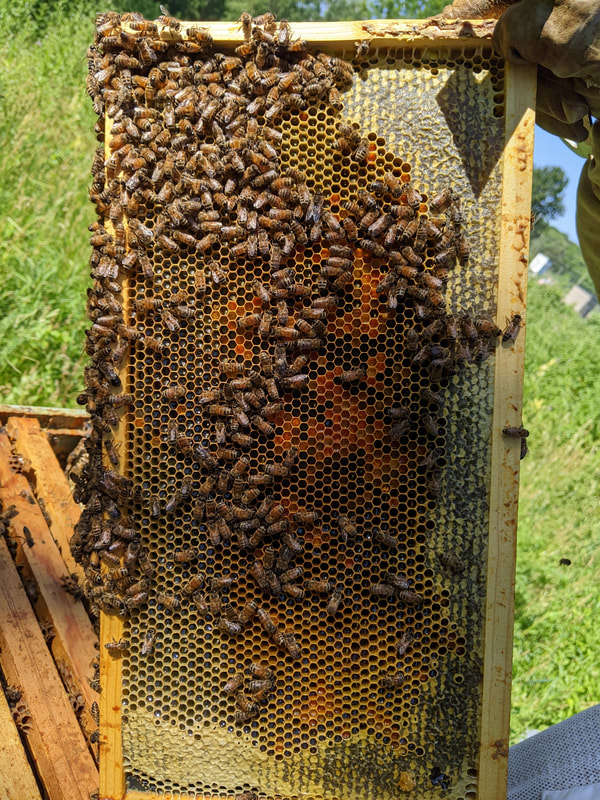
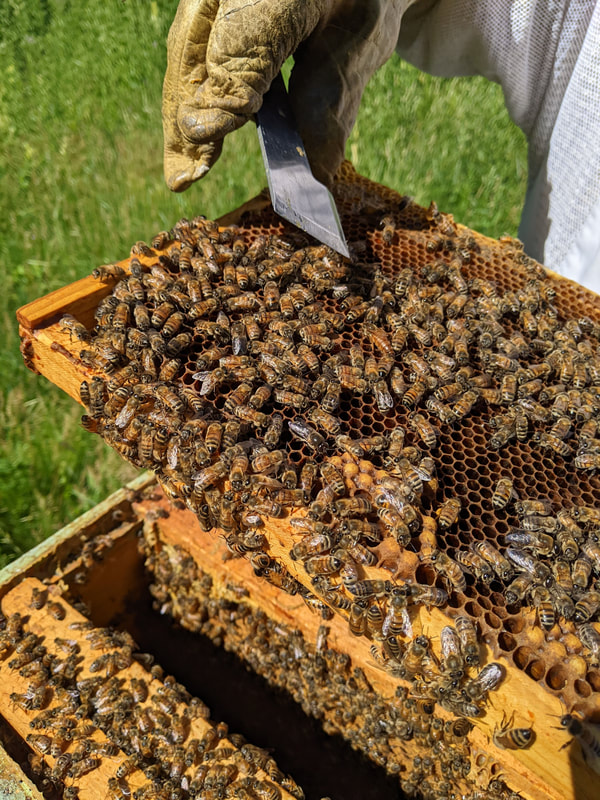
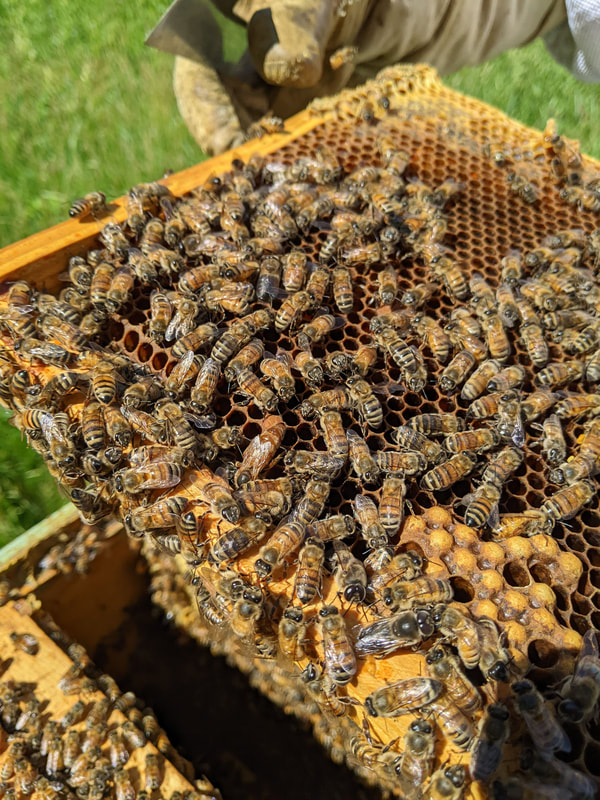
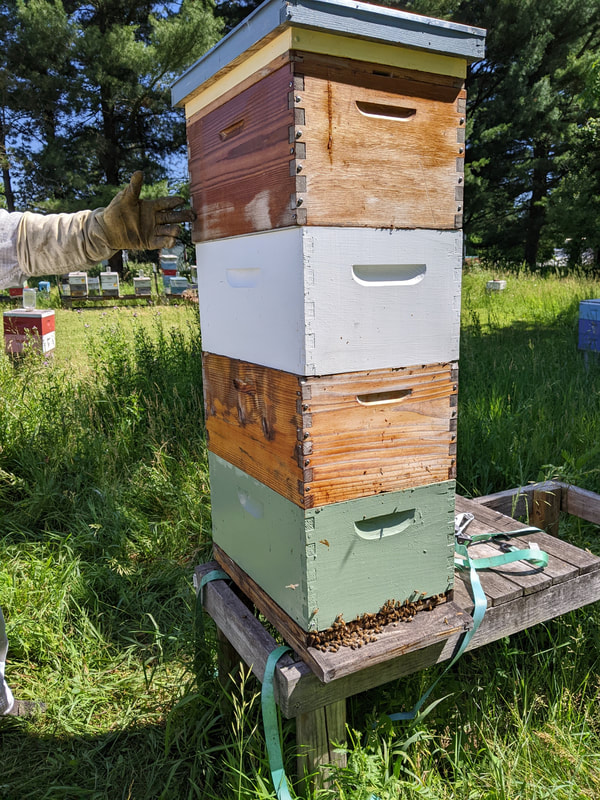
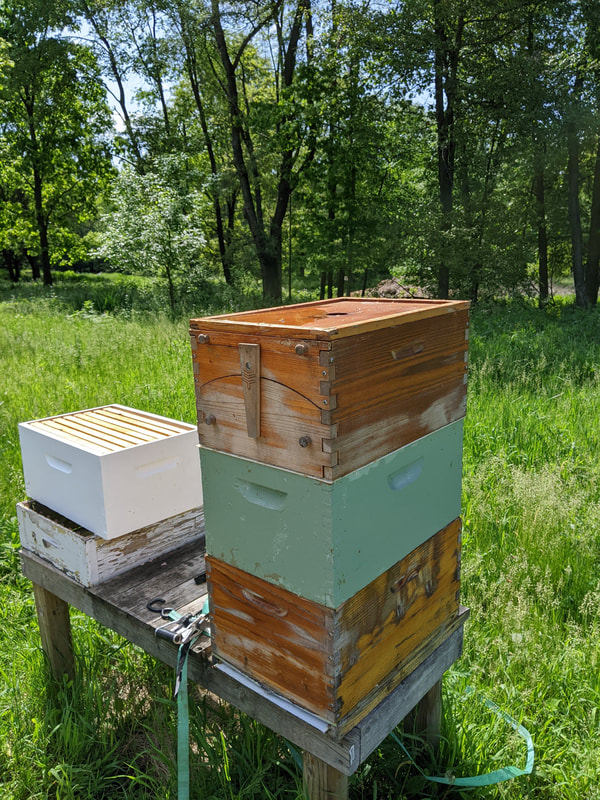
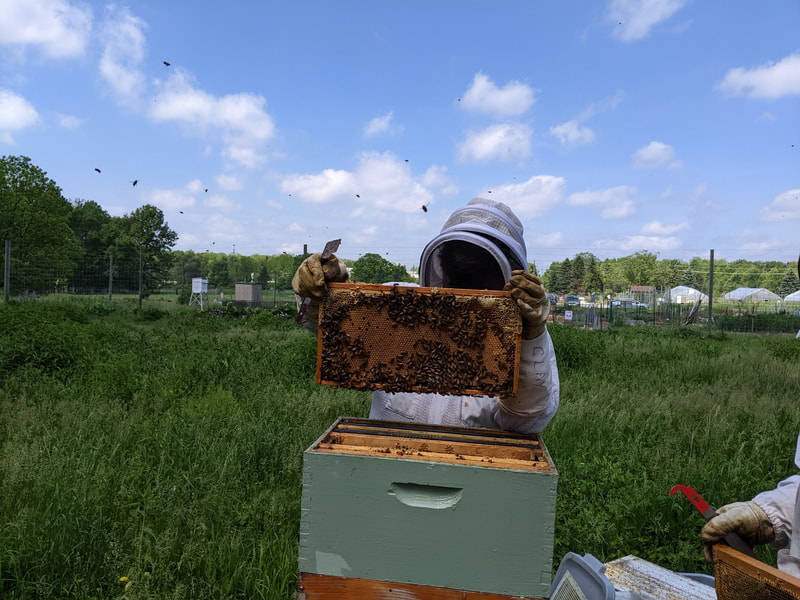
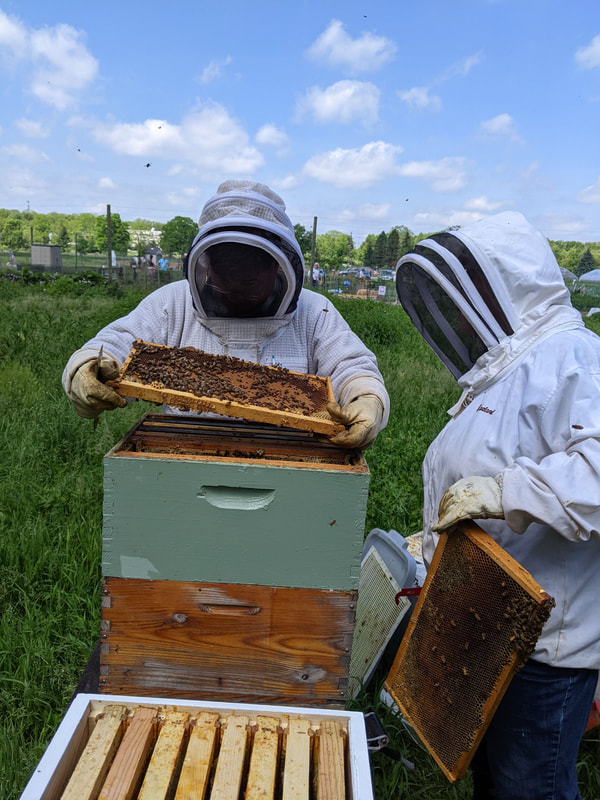
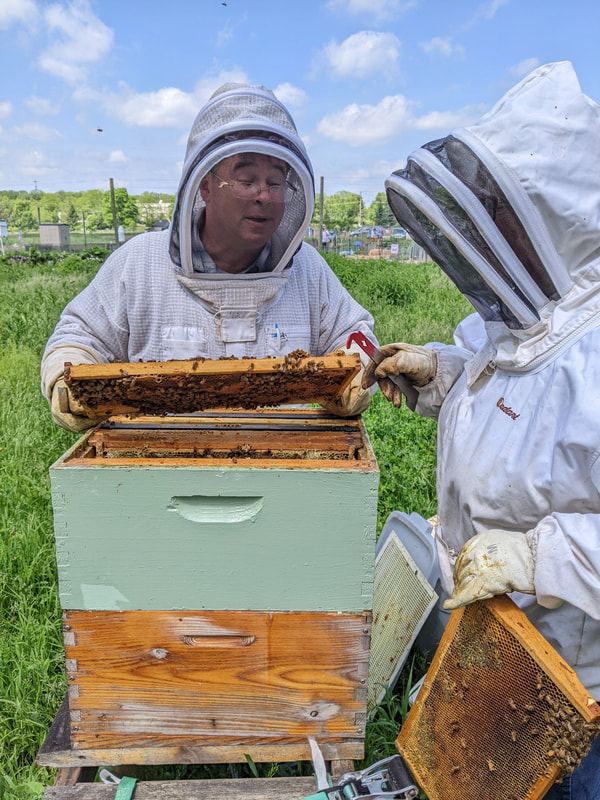
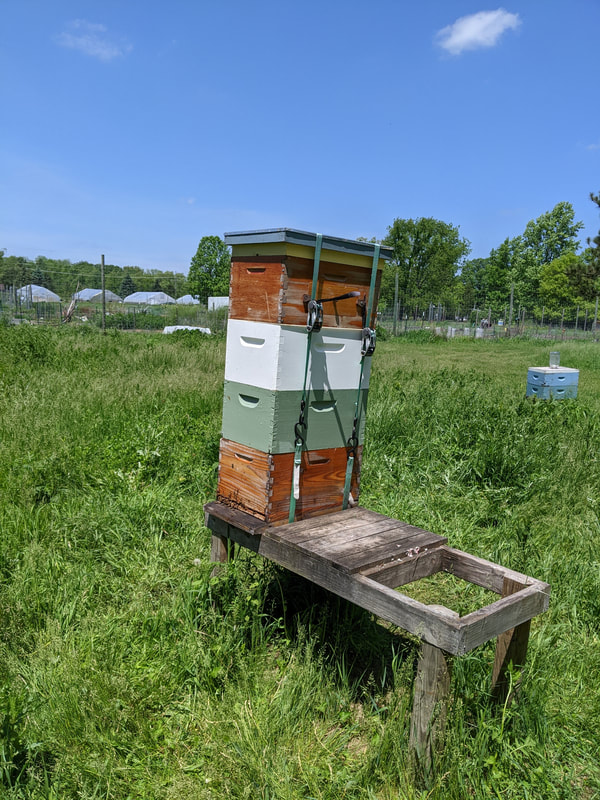
 RSS Feed
RSS Feed
